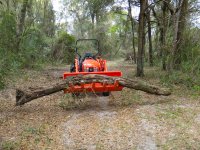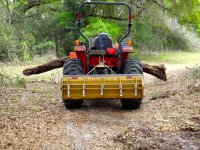coolnature
Silver Member
I will be taking delivery of a NH T4.95 w/ FEL in early January. The rears are Michelin 18.4x34 R1W. It appears Michelin does not recommend liquid ballast in their radials but I and my dealer cannot seem to find any wheel weights over 440# for both rear axles. I don't anticipate much road usage, the tractor will primarily be used for mowing and baling hay, mowing pastures, etc. Even with a 3PT attachment as ballast, I can't see 440# of wheel weights being much of a help. Any comments / suggestions surely welcome!

